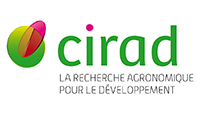Cocoa Under Heat and Drought Stress
Résumé
Cocoa ( Theobroma cacao L.) is an important cash crop in many tropical countries, particularly in West Africa. Heat and drought are both known to affect the physiology of cocoa plants through reduced rates of photosynthesis and transpiration, as well as changed physiological processes such as the functions of photosystems, chlorophyll synthesis, stomatal conductance and expression of heat-shock proteins. This in turn leads to decreased yields and increased risks of mortality under severe heat and drought. To help cocoa plants adapt to climate change, the literature suggests agroforestry as a potential farm management practice. It has been argued that the lack of tree cover in cocoa cultivation systems exposes the crop to heat and direct solar radiation, thus increasing evapotranspiration and the risk of drought. Drawing on data generated from two on-field studies, this chapter assesses the shade effect on cocoa’s physiological responses to drought and heat stress to determine whether shade would be beneficial under climate change scenarios. We conclude that shade improves the physiology of cocoa, but that this may not be sufficient to compensate for the negative effects of high temperatures and severe drought exacerbated by climate change in sub-optimal conditions.
Domaines
Sciences agricoles| Origine | Publication financée par une institution |
|---|---|
| licence |


